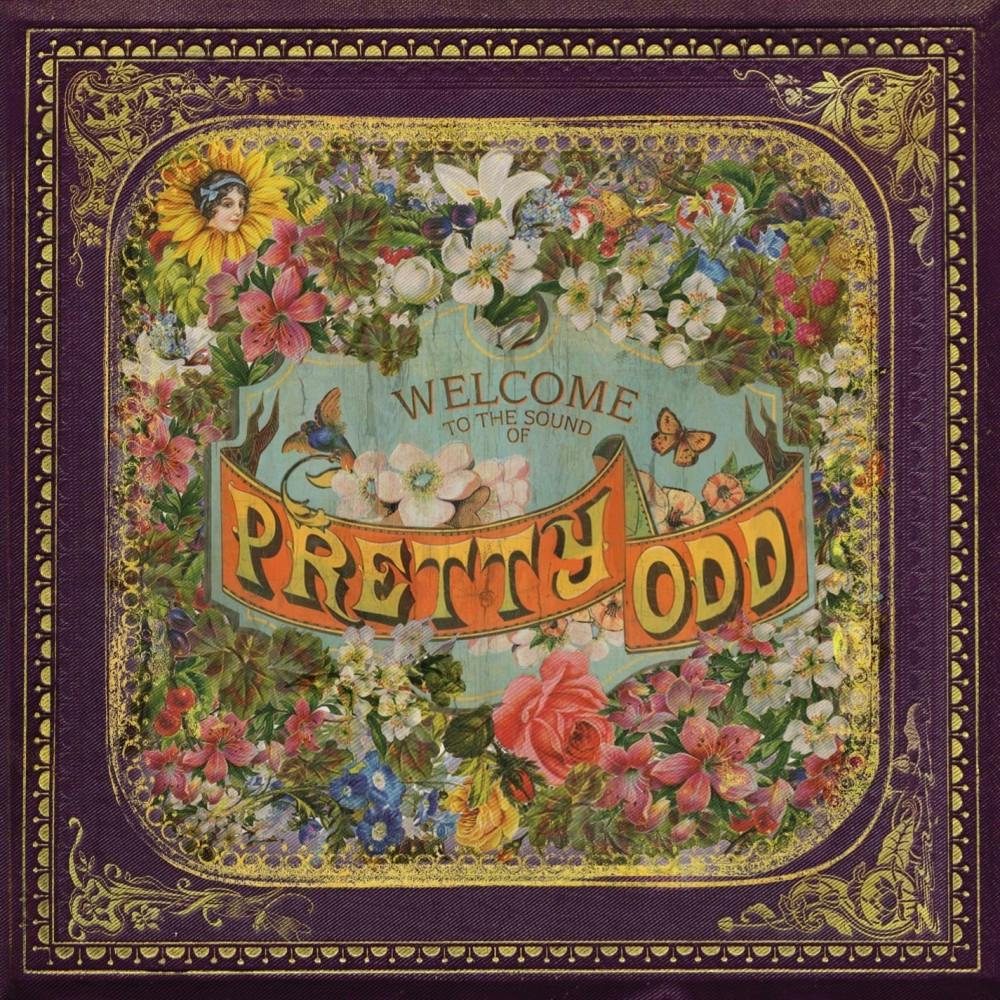On March 25th, 2008, Panic at the Disco (at that point sans exclamation point) released their delightfully strange sophomore album, Pretty. Odd. Despite radically departing from the taut angst of their first album, Panic asserts that they’re “still the same band” on the opening track. Maybe that’s true, but their tone and sound as they say it seem to indicate otherwise. Pretty. Odd. makes room to discuss what constitutes the essence of the band: whether it’s their sonic identity or the musicians themselves.
The Pretty. Odd. stage of Panic! at the Disco’s discography (when the punctuation shifted from their name to their album title) drastically stands out from the similar drama and breathy sexuality of their previous and next albums—A Fever You Can’t Sweat Out and Vices & Virtues respectively. If A Fever You Can’t Sweat Out set its stage in a smoky burlesque club doubling as a brothel, Pretty. Odd. takes place in the morning when the debauchers have trudged out and the windows have been opened and the sun’s been let in for the building to breathe. After they brought the shutters back down for Vices & Virtues, Panic! has never returned to the sun-drenched parlor where it’s always nine in the afternoon.

Image from Pinterest
That’s the magic of Pretty. Odd. It sits on its grassy hill distant from the Panic!’s cabinet of symbols and motifs, far from the taut moments of conflict that define their discography. Gone are the tense exchanges and trial-by-fire moments of A Fever You Can’t Sweat Out. Instead, Pretty. Odd. finds meaning in vibrant personifications of nature and small doses of reality crouched in fantasy. A psychedelic naturalism and lively effervescence spills from its 15 eclectic tracks.
The album begins with an exuberant breaking of the fourth wall, thanking fans for their patience before seamlessly transitioning into the now-iconic piano opening of “Nine In the Afternoon”— the song that sets the stage for the eternal sunlit moment in which the album takes place. Then, on “She’s a Handsome Woman,” the band takes on an orchestra-backed, chugging Rolling Stones sound before promptly switching gears again. “Do You Know What I’m Seeing” juxtaposes a very Panic! at the Disco moment of tumultuous ultimatum with thoughts of wind, weather, and a life with priorities run astray. Over an orchestral ebb and flow of harmonica, acoustic guitar, prominent strings, and distant squawking crows, this is the point at which the album begins to reveal that, as another fourth wall-breaking transition indicates that “things have changed.”
Then, with a faint static crackle and an earnest singular acoustic guitar, all the layers are stripped away and Urie’s smooth measured tone seems to melt into its place alongside the music; “Northern Downpour” exhales and, six tracks in, we arrive at the clearing where Panic! finds the mellow mysticism that defines the album. At this point, Pretty. Odd. transcends the '60s rock influences that shape the album’s first half. The lyrics become beautiful abstractions that weave human love and nature into one and relish the sound and emotion of the words rather than the meaning (this lyrical style would go on to become one of the band’s staples—especially on Death of a Bachelor). The instrumentation changes as well, finding mystery and magic in its blend of baroque orchestra and tinges of folk—this made all the richer by production that begs for, if not necessitates, listening with a good pair of headphones.
Pretty. Odd. filters thoughts of lost love through a deeply romanticized, often psychedelic connection with nature. Songs like “When the Day Met the Night” feel like a floating daydream in which those memories of lost loves turn into a story of the golden moment “when the moon fell in love with the sun” and the moon’s plea for the sun not to break her heart. Several tracks later, on “She Had the World,” softly callous verses and a tender harpsichord tell the story of the girl (the moon) who “spun the stars on her fingernails,” but “couldn’t ever win me / Because she couldn’t catch me.” As gentle and reassuring as the song may try to be, it doesn’t hide the heartbreak at the end of the idyllic relationship formed in “When the Day Met the Night.”
As the album ends and the fantasy begins to dissipate, you’re left with two options: to move on into a world that feels much more like that of A Fever You Can’t Sweat Out and Vices & Virtues or to delve back into the mellow beauty of the place where it's nine in the afternoon and reality only comes in waves. After ten years and a handful of new Panic! albums, Pretty. Odd. still basks in its distant, timeless moment seeing memories form in the clouds.
Images: Pinterest, Amazon, YouTube
For more entertainment related content, visit us at Byte Bsu!



















